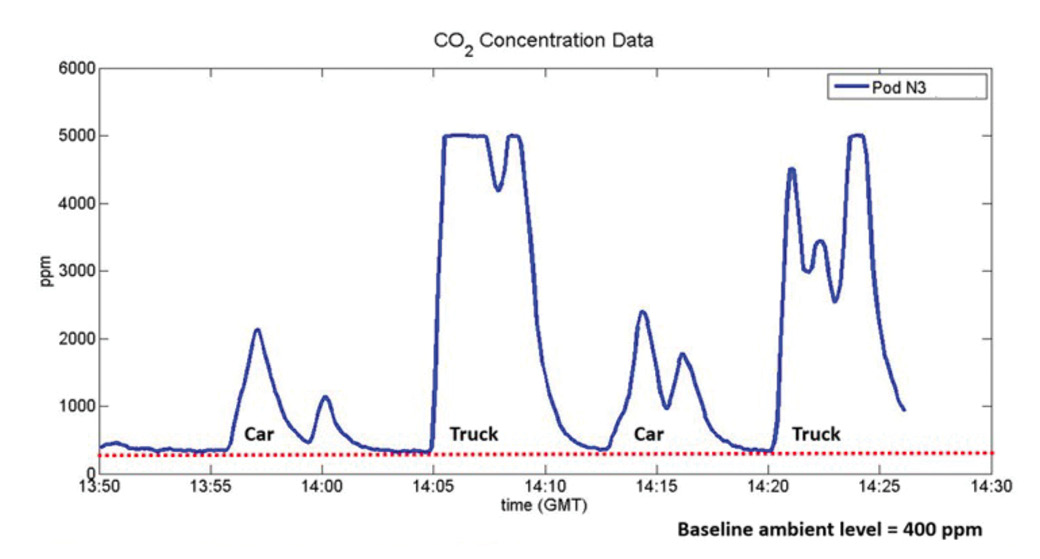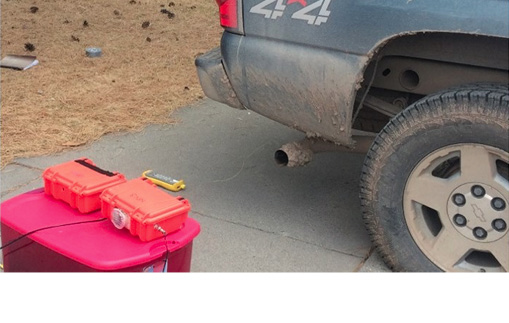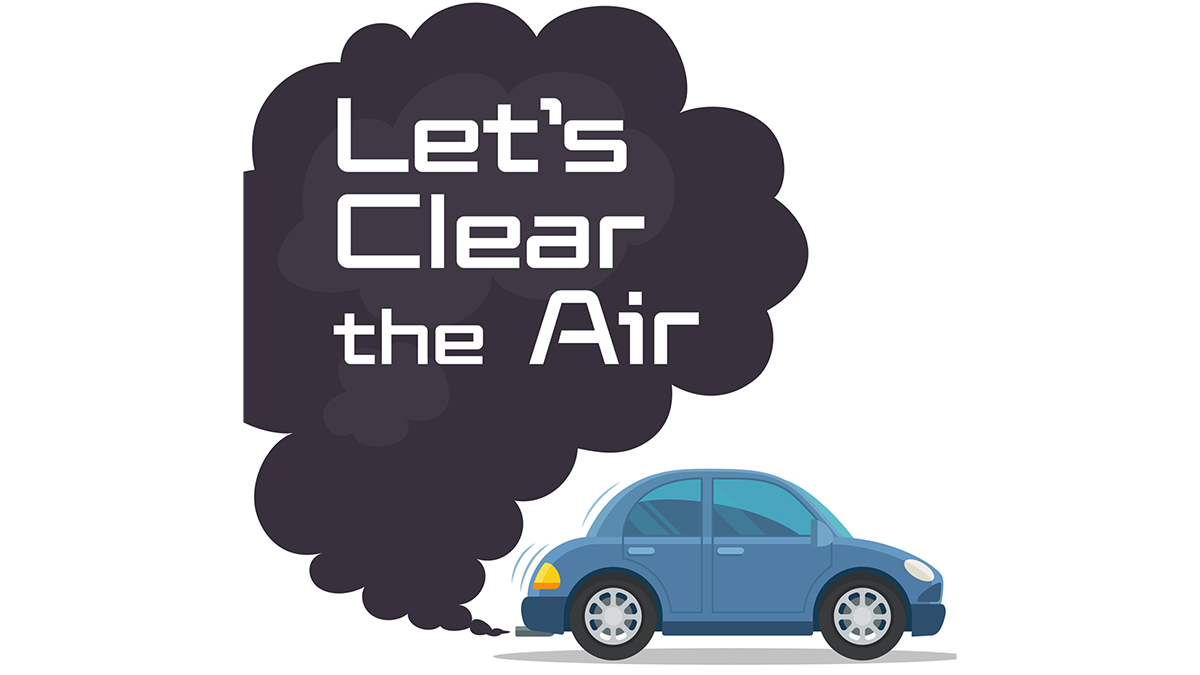Feature
Let’s Clear the Air
Promoting cultural responsiveness in the science classroom with a 5E lesson on air quality.
America’s current student demographics reflect greater diversity than ever before. With the increased enrollment of Black and Latinx students in American schools (NCES 2019), the importance of providing science students with classroom experiences embracing diversity is greater than ever. Experiences that spark an interest in STEM careers are imperative and careful lesson planning in the context of the NGSS can help promote greater cultural responsiveness and improved STEM career expectations (Wild 2015). With this in mind, developing classroom-level curricula reflecting cultural responsiveness is necessary for science teachers to embrace.
This lesson sequence provides culturally responsive classroom experiences and learning opportunities that allow students to draw social meaning in a variety of diverse community contexts. Cultural responsiveness is achieved in the following lesson sequence through the use of the science and engineering practices (SEPs) of analyzing and interpreting data, constructing explanations, and engaging in argument from evidence (NGSS Lead States 2013); all of which advance equitable science learning in the classroom (Lee, Miller, and Januszyk 2014; NRC 2012).
Additionally, this lesson sequence promotes a connection to real-life phenomena and anchors the disciplinary content within diverse community contexts. Doing so ultimately empowers students to take social action in response to a phenomenon reflective of social injustice in diverse communities and “coupling scientific investigations with social action projects may provide spaces for students to experience academic empowerment alongside political empowerment” (Dimick 2012, p. 1010), which is a cornerstone of culturally responsive pedagogy (CRP) (Ladson-Billings, 1995).
The activity
This lesson sequence, conducted over five class periods, uses a 5E approach to allow students to explore air pollution in the context of vehicle emissions, and to study the impact of this phenomenon on diverse communities. Bybee’s (2013) 5E lesson model provides a constructivist approach to science instruction by incorporating five phases (Engage, Explore, Explain, Elaborate, and Evaluate) into phenomena-based lesson sequences as a means to support the development of students’ critical thinking, creativity, communication, and collaboration skills in diverse classrooms. Each phase provides diverse students with opportunities to draw from their own experiences and knowledge to access the disciplinary objectives of science curricula.
This lesson sequence, designed for a 10th grade college preparatory Chemistry course, focuses on performance expectation HS-ESS3-4 (see “On the web”). Since many states that have adopted the NGSS integrate the Earth Science standards through a three-course or four-course model, Earth Science has become a ubiquitous subject among science teachers. Students are heterogeneously grouped according to academic ability, English language proficiency, and ideally, diversity of ethnic and racial backgrounds. The lesson sequence requires the following materials:
- Data sets for each group (Figure 1). These data sets can also be found on the Teach Engineering website.

Sample air quality data.
- A scientific argument template (Figure 2).

Claim, Evidence, Reasoning mini poster template.
- Article describing how increased air pollution is linked to bad teenage behavior (see “On the web”).
- Article describing how people of color and the poor are disproportionately exposed to air pollution (see “On the web”).
Engage (Class period 1, 15 minutes)
The lesson sequence begins by presenting students with the following online news article headline (see “On the web”): “Increased air pollution linked to bad teenage behavior.” Once students have had a chance to informally share their thoughts about the title of the article, the teacher displays and reads the following short article summary which states:
A new study linking higher levels of air pollution to increased teenage delinquency is a reminder of the importance of clean air and the need for more foliage in urban spaces. The study suggests ambient air pollution may increase delinquent behavior among 9- to 18-year-olds in urban neighborhoods in Greater Los Angeles.
This article summary sets the stage for the upcoming exploration activity and also piques student curiosity as students consider the questions: “How do you think teenage delinquency as a result of air pollution impacts diverse urban communities? Why?” Allowing students an opportunity to consider these questions gives them a chance to familiarize themselves with the notion that air pollution does not affect all communities equally. Additionally, students may begin to think of how air pollution, as a result of teenage delinquency, might be impacting their own diverse communities, which creates a basis of interest in the subsequent lesson sequence.
Connection to CRP
Situating the learning sequence in the context of air pollution and its impact on diverse communities, reflects what the NGSS Lead States (NGSS Appendix D 2013) proposes as an effective strategy to integrating culturally responsive teaching in the science classroom.
Explore (Class period 1, 35 minutes & Class period 2, 50 minutes)
The teacher then poses the guiding question of the exploration: from the data provided, what can you infer about the relationship between vehicle type, vehicle age, and emission concentrations? Student groups are provided with data sets that show CO2, NO2 and Volatile Organic Compound (VOC) emissions for a newer car and an older truck. Student groups analyze the data and infer the relationship between vehicle type, vehicle age, and emission concentrations. It is important to note that while data for an older car and a newer truck are not provided in the data set, the purpose of this exploration is to have students develop primary understandings of the relationship between vehicle type, age, and emission concentrations. Additional data for newer cars and older trucks can be collected from students following this lesson sequence, and is described further in the “student feedback” section of this article.
Connection to CRP
Providing diverse students with an opportunity to collaboratively analyze data and contribute their perspectives in a way that generates group understanding further emphasizes the cultural responsiveness of collaboration. Student collaboration is a key component of cultural responsiveness in the science classroom as “students’ cultural and linguistic backgrounds [are] engaged as resources for science [learning]” (Brown 2017, p. 1146).
Explain (Class period 3, 50 minutes)
After students have analyzed the data, they collaboratively develop a scientific argument that answers the guiding question of the activity. Students use the scientific argument template (Figure 2) to ensure their arguments contain a claim, evidence, and reasoning. Be sure to remind students that “the definition of a claim as a statement that answers a question; evidence as the data to defend the claim; and reasoning as the link between the evidence and the claim that shows why certain data can serve as evidence” (Delen and Krajcik 2015, p. 1954). I chose the scientific argument template because this streamlined approach to the traditional lab report promotes access to scientific language for English Language Learners (Bjorn 2018) and relies on the experiential background of diverse learner groups to arrive to an agreed upon scientific argument. A sample of student work can be found in Figure 3.

Sample student work
Connection to CRP
Allowing students to engage in formulating arguments from evidence coincides with the explicit culturally responsive practices of discourse and classroom relationships. Promoting discourse allows students to engage in small-group conversation wherein scientific language practices are encouraged between peers. Promoting classroom relationships emphasizes care, respect, and culturally inclusive interactions between students as they work together productively toward a common goal (Brown 2017).
Elaborate (Class period 4, 20 minutes)
After students have had the opportunity to formulate their scientific arguments, they are provided with an article that details how people of color and the poor are disproportionately exposed to air pollution. When students have finished reading the article, the teacher asks students: “how does the information presented in this article connect to the data you analyzed?” Students record their responses in Nearpod (https://nearpod.com/), or another similar collaborative web platform, and the teacher displays responses on the screen for discussion.
The teacher then regroups the class for a discussion and calls on students to share their thoughts on the connections between the data set and the article. This discussion gives students the opportunity to apply knowledge gained during the exploration activity to other contexts, and to identify how emissions from various types of vehicles might impact diverse communities. Discussion is an important pedagogical tool in this learning sequence as it is a cornerstone of teaching anchored in social justice (Schiro 2013). Exploring social justice in the science classroom further reinforces the position of the NGSS Lead States on effective classroom strategies for CRP (NGSS Appendix D, 2013).
Students might connect such things as lower socioeconomic status with the age and/or type of vehicles and the impact these vehicles’ emissions have on poor communities. Discussions with my own students revealed that they understood that “poor people often cannot afford new cars” and this connected to the data analysis activity because “older vehicles give off more emissions than newer vehicles.” These connections and discussion points form the basis of the cultural responsiveness of this activity and get students thinking about how science can be used to better understand diverse communities.
Connection to CRP
Meaningful learning in the culturally responsive science classroom draws on students’ diverse funds of knowledge as a resource to evaluate scientific information (Brown 2017). Students’ responses revealed that they already had knowledge associated with the notion that the poor are less likely to purchase newer vehicles, and thus were able to draw valid connections between disadvantaged communities and their exposure to air pollution.
Evaluate (Class periods 4, 30 minutes & Class period 5, 50 minutes)
Following the discussion, students connect their learning from the data analysis and the short article to answer the following open-ended discussion questions:
- The results of the Explore activity and the article can be used to explain a phenomenon known as environmental bias. What do you think is meant by environmental bias?
- How can scientific investigations be used to overcome environmental bias?
- How can your understanding of environmental bias, in the context of air pollution, be used to propose a solution that can help overcome this problem?
These discussion questions help students reflect on the connections between the data set and the article, and construct understandings of broader issues facing society. The final open-ended discussion question allows students to begin thinking about how to solve the issue of environmental bias in diverse communities. This question is used to help students with the summative assessment of the learning sequence, in which they must ultimately present a PowerPoint action plan presentation to mitigate this environmental bias.
Developing an action plan to enact a policy or practice change is the final step of Earth Force’s (https://www.earthforceresources.org) Community Action and Problem-Solving Process. To ultimately develop an action plan that includes specific tasks, student groups research the policies or practices that reinforce the environmental bias associated with air pollution and determine how to enact changes to these policies or practices. Examples of changes that students may choose to focus on include, provision of no-cost air filtration systems for residents of diverse, low-income communities, increasing buy-back values to encourage low-income residents to retire their existing polluting vehicles, or increasing existing rebate incentives to low-income community members for the purchase of low-emission vehicles.

Connection to CRP
Allowing students the opportunity to propose solutions to social injustices draws on their experiences and knowledge during instruction to advance their sociopolitical consciousness (Brown 2017). Doing so promotes meaningful learning that ultimately connects to students’ lives, which reinforces Gay’s (2002) assertion that culturally responsive pedagogy ought to be empowering and transformative for students.

Experimental setup
Assessment
By the end of this lesson sequence students should be able to:
- Identify the relationship between vehicle age and type to emission concentrations.
- Apply understanding of vehicle emissions to various community contexts.
- Recognize that environmental bias exists due to certain policies and practices.
- Propose solutions to mitigate environmental bias associated with air pollution and its impact on diverse communities.
This lesson sequence offers multiple opportunities for formative assessments. Students are observed during all stages of the lesson sequence, and oral or written responses to questions posed during the Engage, Elaborate, and Evaluate phases are noted, and their answers to the open-ended questions are also discussed.
The first summative assessment of the learning sequence is embedded early in the Exploration phase when students complete their scientific arguments following the analysis of data sets. This summative assessment is assessed by the teacher against a rubric (see “On the web”).
A second summative assessment is assigned at the end of the learning sequence and requires students to develop a PowerPoint presentation proposing an action plan to enact a policy or practical change aimed at overcoming environmental bias in the context of air pollution and its impact on diverse communities. Student action plan presentations are assessed according to a rubric (see “On the web”).
Differentiation
Though the literature shows that activity-oriented science teaching is appropriate and effective for students with special needs (McGinnis 2013), some additional differentiation strategies can be used to increase the accessibility of this learning sequence.
- Provide a data table instead of graphs for students who have trouble interpreting graphical data
- Provide an oral recording of the article for those students who struggle with reading
Student Feedback
I piloted this lesson sequence with my own diverse classroom. Following the lesson sequence, I conducted an informal focus group interview with 15 purposefully sampled student participants. The focus group interview gave me the opportunity to gauge student feelings and opinions about the activity, and to determine how well the activity provided them with a learning experience reflective of CRP.
Overall, students enjoyed this activity and were engaged with the data analysis and constructing their scientific arguments. Some students remarked that the lesson sequence “allowed [them] to apply science to a real-life problem,” and “it was fun to work together with [the] groups to make conclusions from [the] data.” Interestingly, students expressed surprise when they learned that certain cultural and socioeconomic groups were disproportionately affected by air pollution. Many students indicated that “[they] didn’t know that air pollution affects different neighborhoods differently.” This sentiment was overwhelming among the 15 student participants, and indicates that connecting disciplinary core ideas of the content to diverse community contexts is a powerful strategy to engage diverse learners in meaningful science learning.
When asked about drawbacks of the activity, students indicated that providing them with data sets was helpful for them to understand the relationship between vehicle age, type, and emission concentrations, but did not effectively connect to their own communities. Some students indicated that “[they] wished [they] could collect data in [their] own neighborhoods” to see if the article findings applied to their own communities. To mitigate this, I propose that the above learning sequence serve as an introductory learning activity designed to inspire students to collect data from their own communities. Air collection Pods can be purchased or rented so that students can use the instrument to collect data from their own communities. Doing so would not only allow them to collect data from the vehicles available in their communities, but might also serve to address air pollution as a broader construct. When collecting baseline data from various community locations, students are better able to assess the impact of additional factors that impact air pollution in diverse communities, such as commercial vehicles and community proximity to freeways.
Conclusion
While the construct of air pollution is often taught in alignment with the NGSS, relating the disciplinary core idea of air pollution to diverse community contexts adds an additional dimension of cultural responsiveness to student learning that would otherwise be unaddressed. In fact, not only does relating air pollution to diverse community contexts promote cultural responsiveness, it also aids diverse students with developing a broader understanding of the world around them. As a student remarked: “I had no idea that certain communities were more polluted than others!” ■
On the web
This activity was inspired by: https://www.teachengineering.org/activities/view/cub_airquality_lesson01_activity2
Increased air pollution linked to bad teenage behavior online Science Daily article: https://www.sciencedaily.com/releases/2017/12/171213143720.htm
How people of color and the poor are disproportionately exposed to air pollution (online magazine article): https://www.calhealthreport.org/2019/02/08/people-of-color-and-the-poor-disproportionately-exposed-to-air-pollution-study-finds/
Action plan rubric: https://www.nsta.org/sites/default/files/journal-articles/TST88-2/Nasr/action_plan_rubric.pdf
Vehicle type vs. emissions rubric: https://www.nsta.org/sites/default/files/journal-articles/TST88-2/Nasr/vehicle_emissions_rubric.pdf
NGSS Connections: https://www.nsta.org/sites/default/files/journal-articles/TST88-2/Nasr/NGSS_Connections_Box.pdf
Nancy Nasr (nnasr@ghctk12.com) is a science teacher at Granada Hills Charter High School in Granada Hills , CA.
5E Earth & Space Science Inquiry Labs Lesson Plans Multicultural NGSS Pedagogy Phenomena STEM Teaching Strategies High School



